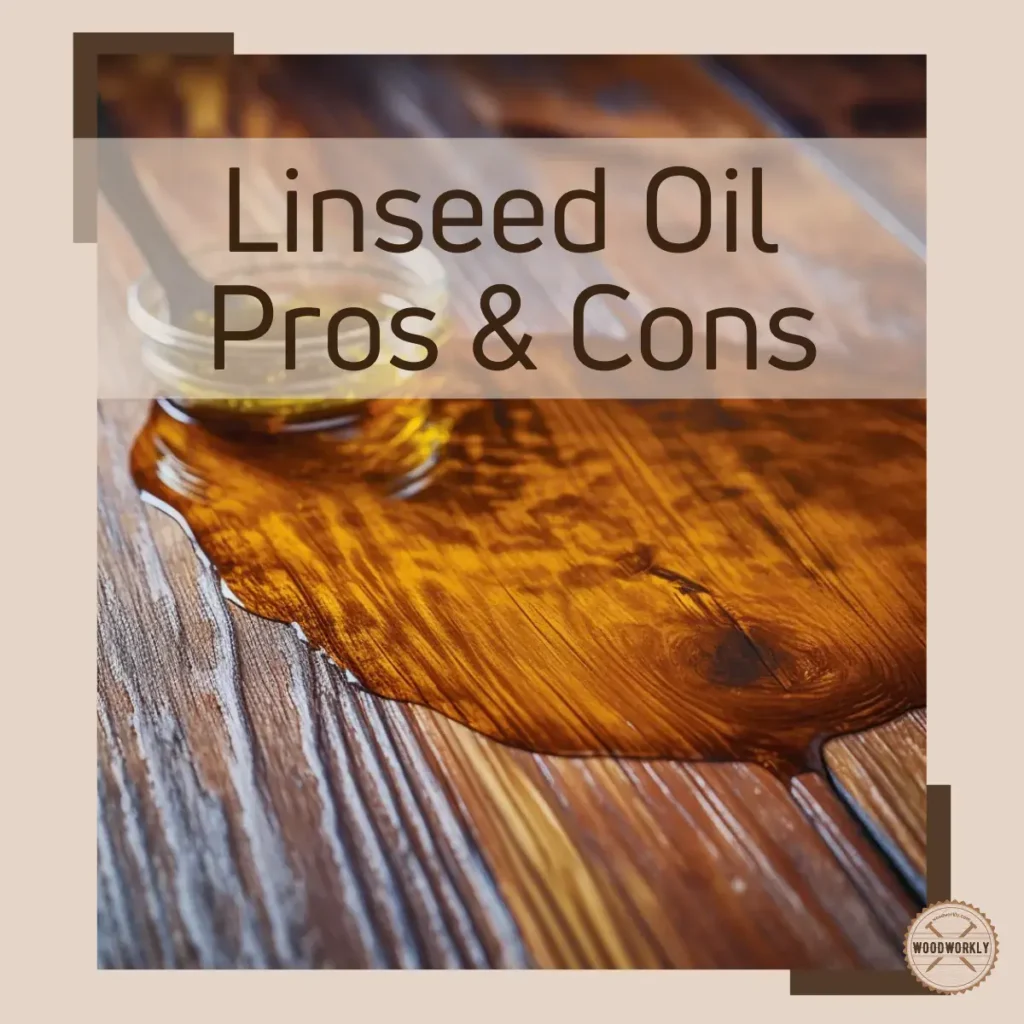When it comes to finishing wood, oak is a popular choice due to its durability and beautiful grain. However, not all finishes are suitable for oak.
One important question that arises is whether or not you can use boiled linseed oil on this particular wood.
Properties of boiled linseed oil
Boiled linseed oil is derived from flaxseed and has been a popular wood finish for centuries. It is prized for its ability to enhance the natural beauty of wood while providing some protection against moisture.
It has a significantly longer drying time compared to other finishes. The slow drying time of boiled linseed oil can result in the oil seeping into the wood’s pores and creating an uneven finish.
Furthermore, oak contains tannins that can react with the linseed oil, causing discoloration and a blotchy appearance.
Potential risks of using boiled linseed oil on oak
While boiled linseed oil may have its benefits as a wood finish, it is important to understand the potential risks it poses when applied to oak. One significant risk is the oil’s slow drying time. Because oak is a dense and porous wood, the prolonged drying time can result in an uneven finish with the oil seeping into the wood’s pores.
Oak contains tannins which can react with the linseed oil, leading to discoloration and a blotchy appearance. This is especially noticeable on light-colored oak. These risks make boiled linseed oil an unfavorable choice for oak furniture and other oak wood projects.
Alternative options for finishing oak
There are several alternative wood finishes that are more suitable for oak and will help protect and enhance its natural beauty. One popular option is polyurethane, which is a synthetic varnish that forms a protective layer on the wood. It is available in both water-based and oil-based formulations and provides excellent resistance to water, chemicals, and scratches.
Another option is shellac, a natural resin that creates a lustrous and durable finish on oak. Shellac is known for its easy application and quick drying time, making it a convenient choice for DIY projects.
If you prefer a more traditional approach, you can consider using tung oil or Danish oil. These penetrating oils offer a rich, deep finish that accentuates the grain of the oak while providing long-lasting protection.
When choosing a wood finish for oak, it is crucial to consider the characteristics of this type of wood and opt for finishes that will complement its unique qualities.
Professional advice for oak finishing
While there are many wood finishes available for oak, seeking professional advice can help ensure the best results. Professional woodworkers and finishing experts can offer valuable insights and recommendations based on their experience and knowledge of oak’s specific characteristics.
Consulting with a professional can help you assume he intricacies of oak and determine the most suitable finish for your specific project. They can also provide guidance on proper application techniques, drying times, and maintenance.
Professional can help you avoid common mistakes and pitfalls that could potentially damage your oak furniture.
Taking proper care of your oak furniture
Taking proper care of your oak furniture is essential to ensure its longevity and beauty. Here are some key tips to keep in mind:
1. Regular dusting:
Dust your oak furniture regularly using a soft cloth or a feather duster. This helps prevent the buildup of dirt and grime, which can dull the finish over time.
2. Avoid direct sunlight:
Oak furniture can be sensitive to UV rays, which can cause fading and discoloration. To protect your furniture from sun damage, position it away from direct sunlight or use curtains or blinds to filter the light.
3. Use coasters and placemats:
To avoid water rings and heat damage, always use coasters and placemats under beverages, hot dishes, and pots. Wipe up spills immediately to prevent them from seeping into the wood.
4. Apply furniture polish:
Use a high-quality furniture polish specifically formulated for wood to keep your oak furniture looking its best.
Final thoughts
When it comes to caring for your oak furniture, one of the most important things to remember is to avoid using boiled linseed oil. While linseed oil is commonly used to enhance the natural beauty of wood, it can have adverse effects on oak.
Oak has a unique grain pattern and a light color that many people want to preserve. Using boiled linseed oil can result in a darker and more yellowish appearance, which may not be the desired look for your oak furniture.
Opt for a high-quality furniture polish specifically formulated for oak or wood in general. These products are designed to enhance the natural beauty of the wood while offering protection against everyday wear and tear.
By avoiding the use of boiled linseed oil and selecting the right products for your oak furniture, you can enjoy its beauty and longevity for years to come.









